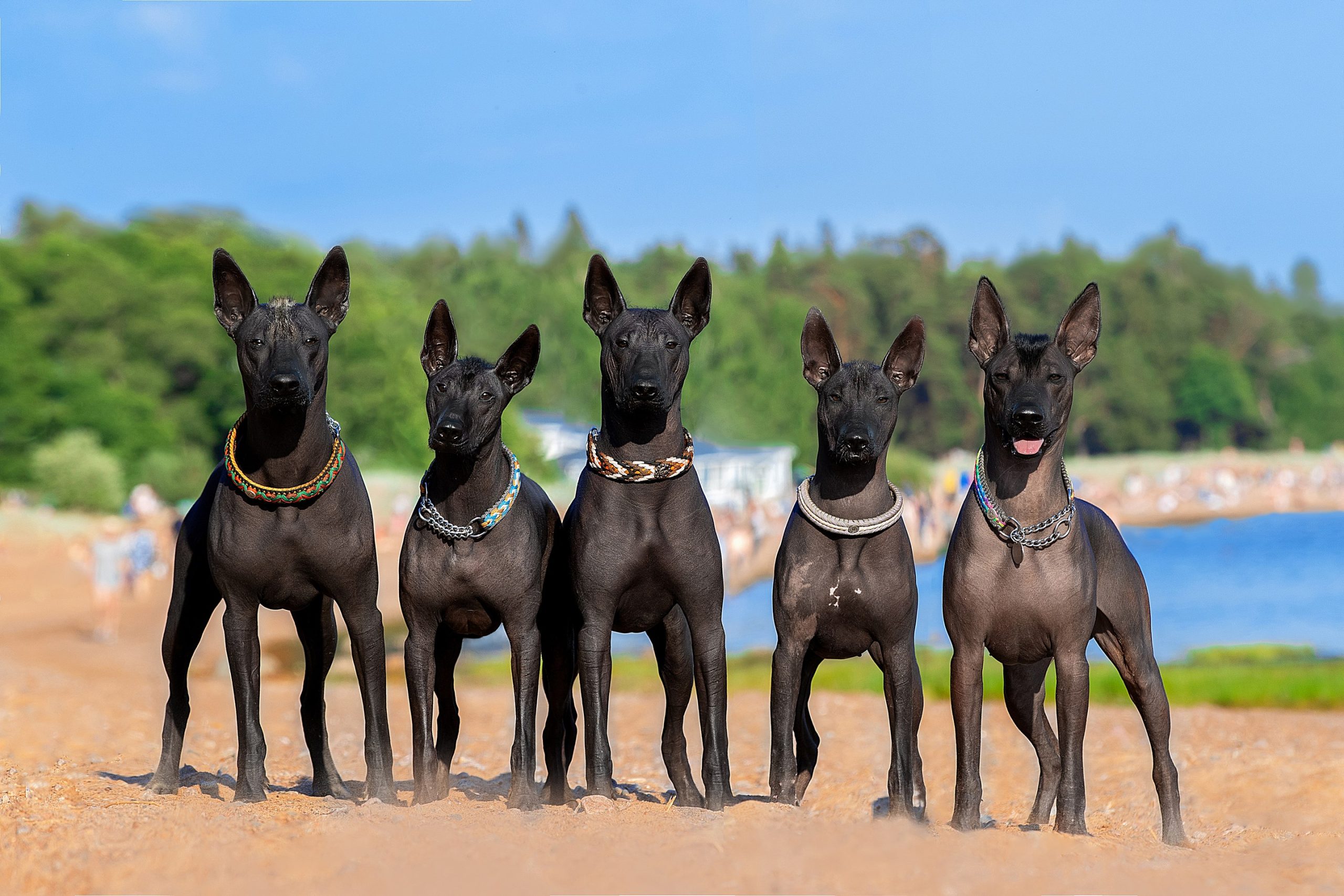Meet the Xoloitzcuintle, a 3,000-year-old Mexican dog breed that narrowly escaped extinction. Discover its fascinating story and unique traits.
I had a great honor, due to my parent’s work, to travel the world. One of the most amazing places we traveled to was Mexico, a place I call my second home and where I grew up. Although I no longer reside in this beautiful country, I carry fond memories of my time there. I love everything about Mexico, from its culture, history, people, and food. And while I have amply written about their cultural heritage, incredible monuments, and history, a subject I am interested in and have not covered is Mexico’s very own dog breed, the Xoloitzcuintle, or Xolo.
The Xoloitzcuintle is an ancient Mexican dog breed with a history dating back over 3,000 years that narrowly escaped extinction. This intriguing canine’s survival story is a testament to the dedication of breed enthusiasts and the cultural significance of the Xoloitzcuintle in Mexico.
The Xoloitzcuintle’s Brush with Extinction
In the early 20th century, the Xoloitzcuintle, also known as the Mexican hairless dog, was on the brink of extinction. The breed’s population had dwindled due to various factors, including urbanization, cultural shifts, and the displacement of indigenous people in Mexico.
Thankfully, in the 1950s, a group of dedicated individuals, including Norman Pelham Wright, a British journalist, and a handful of Mexican enthusiasts, embarked on a mission to save the Xoloitzcuintle. Through their efforts in locating and breeding the remaining Xolo dogs, they successfully brought the breed back from the edge of extinction.
The Historical and Cultural Significance of the Xoloitzcuintle
The Xoloitzcuintle’s history dates back to ancient Mesoamerican civilizations, such as the Aztecs and the Maya. These dogs held great cultural and spiritual importance, often serving as guardians, healers, and even sacrificial offerings in religious ceremonies. It is believed that the Xoloitzcuintle accompanied the deceased on their journey to the afterlife, providing protection and guidance.
The breed’s name, Xoloitzcuintle, is derived from two Nahuatl words: “xolotl,” the Aztec god of lightning and death, and “itzcuintli,” meaning dog. The name reflects the spiritual significance of these dogs in ancient Mexican culture.
The Unique Characteristics of the Xoloitzcuintle
The Xoloitzcuintle is easily recognizable by its hairless appearance, resulting from a genetic mutation. However, not all Xolos are hairless; a minority of them have short, sleek coats. They come in three sizes: toy, miniature, and standard. Their skin color varies from shades of gray to bronze, and they often sport a distinctive mohawk-like crest of hair on their heads.
Beyond their unique appearance, Xolos are known for their intelligence, loyalty, and affectionate nature. They are also believed to have therapeutic properties, with their body heat providing comfort and pain relief for individuals with various ailments.
The Xoloitzcuintle’s Role in Modern Mexico
Today, the Xoloitzcuintle is a symbol of national pride in Mexico, celebrated for its ancient history and cultural significance. The breed has been designated as Mexico’s national dog, and its image often appears in art, literature, and popular culture.
In 2016, Disney-Pixar’s animated film “Coco” featured a Xoloitzcuintle named Dante as a central character, introducing the breed to a global audience and sparking renewed interest in its preservation.
Preserving the Legacy of the Xoloitzcuintle
The efforts to save the Xoloitzcuintle from extinction have been successful, but the breed remains relatively rare. Breeders, enthusiasts, and organizations such as the Xoloitzcuintle Club of America continue to work on preserving the breed’s genetic diversity and promoting responsible breeding practices.
As interest in the Xoloitzcuintle continues to grow worldwide, it is crucial to maintain its unique characteristics and honor its rich cultural history. By doing so, we ensure that the story of the Xoloitzcuintle, the ancient Mexican dog that escaped extinction, serves as a shining example of the resilience of both the breed and the people who have fought to preserve it.
The Xoloitzcuintle in the International Dog Show Scene
The Xoloitzcuintle has also found success in the international dog show scene. In 2011, a Xolo named Giorgio Armani became the first of his breed to compete at the prestigious Westminster Kennel Club Dog Show in the United States. Since then, more Xolos have participated in dog shows worldwide, showcasing the breed’s unique qualities and raising awareness about its remarkable history.
Xoloitzcuintle Adoption and Responsible Ownership
As the Xoloitzcuintle gains popularity, potential dog owners must be aware of the specific needs and care requirements of this unique breed. Xolos require proper socialization, mental stimulation, and consistent training to ensure they develop into well-rounded companions. Due to their hairlessness, Xolos are also susceptible to sunburns and temperature fluctuations, making it essential to provide them with adequate protection and a comfortable living environment.
Before adopting a Xoloitzcuintle, potential owners should thoroughly research the breed and consider contacting breed-specific rescue organizations, reputable breeders, or Xolo clubs for guidance and support.
Celebrating the Xoloitzcuintle’s Remarkable Journey
The Xoloitzcuintle’s journey from the brink of extinction to its resurgence as a symbol of national pride and cultural heritage is nothing short of extraordinary. This ancient Mexican dog breed serves as a living testament to the power of collaboration, dedication, and the importance of preserving the world’s unique and diverse canine heritage.
Through continued responsible breeding, education, and appreciation for the xoloitzcuintle’s rich history, we can ensure that future generations have the opportunity to experience and admire this remarkable dog breed for years to come.
PLEASE READ: Have something to add? Visit Curiosmos on Facebook. Join the discussion in our mobile Telegram group. Also, follow us on Google News. Interesting in history, mysteries, and more? Visit Ancient Library’s Telegram group and become part of an exclusive group.

